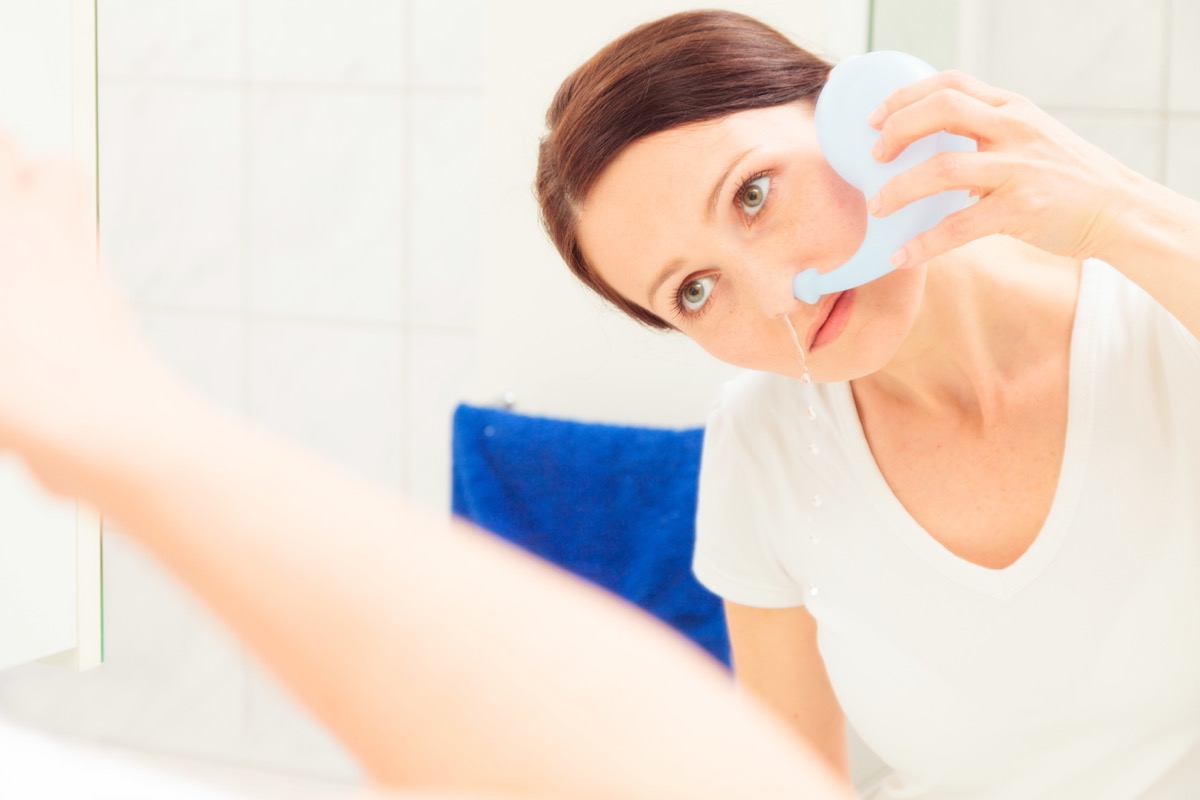RELATED: Never Go in a Lake If You See This One Thing, Local Officials Warn. While a long day in the sun or dehydration can make anyone feel slightly worse for wear, if you experience an unusually bad headache after swimming in warm, fresh water, like a lake, river, or hot spring, it’s time to talk to a medical professional, as this may be a sign of a Naegleria fowleri infection. “Naegleria is a rare infection that can ascend through the sinuses and cause inflammation of the brain and destruction of brain tissue,” says Leann Poston, MD, of Invigor Medical. “Diving or swimming in these bodies of water is your biggest risk factor. It can also occur in poorly cleaned swimming pools,” she adds. According to the Centers for Disease Control and Prevention (CDC), if you experience fever, nausea and vomiting, or a stiff neck following a freshwater swim, you should also speak to a medical professional immediately. Though most symptoms appear within a few days of exposure, they can occur up to nine days after swimming in contaminated water. In addition to a severe headache, fever, nausea and vomiting, and a stiff neck, early symptoms of a Naegleria infection can include “nasal congestion or runny nose and changes in smell or taste,” Poston says. “Later symptoms are similar to bacterial meningitis and may include…confusion, loss of balance, seizures, and hallucinations.” While the condition is rare, affecting just 34 people in the U.S. between 2010 and 2019, Naegleria infections have a fatality rate that exceeds 97 percent, according to the CDC. While submerging your head in contaminated water may give you a Naegleria infection, drinking contaminated water will not result in one, according to the CDC. “You can only be infected when contaminated water goes up into your nose,” the health authority notes. Fortunately, the infection cannot be spread from person to person, either, nor has it been found to be transmissible through contact with aerosolized water, like steam from a hot tub or humidifier. Though the vast majority of Naegleria infections reported in the U.S. were related to swimming, people have developed the infection due to personal care practices.ae0fcc31ae342fd3a1346ebb1f342fcb The CDC reports that three people were infected with Naegleria due to nasal irrigation done with Naegleria-contaminated water between 2010 and 2019. Avoiding dunking your head to keep Naegleria-contaminated water from entering your nose may help reduce your risk of infection, but “there are no rapid, standardized testing methods to detect and quantitate Naegleria fowleri in water,” the CDC reports. In fact, the organization states that, while Naegleria infections are rare, “users should assume that Naegleria fowleri is present in warm freshwater.” RELATED: If You See This at the Beach, Don’t Go in the Water, Experts Warn.




